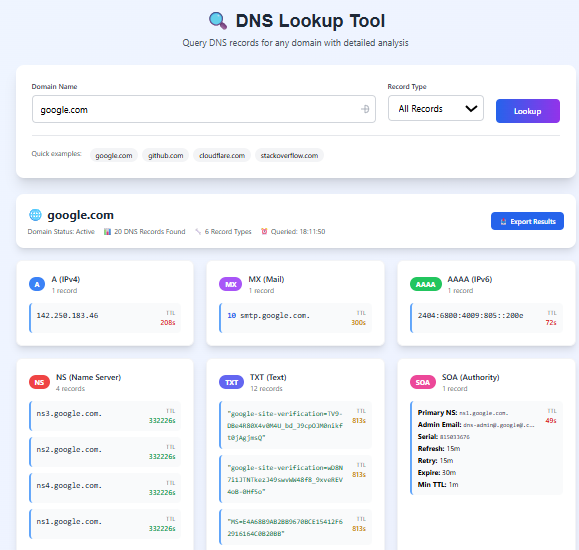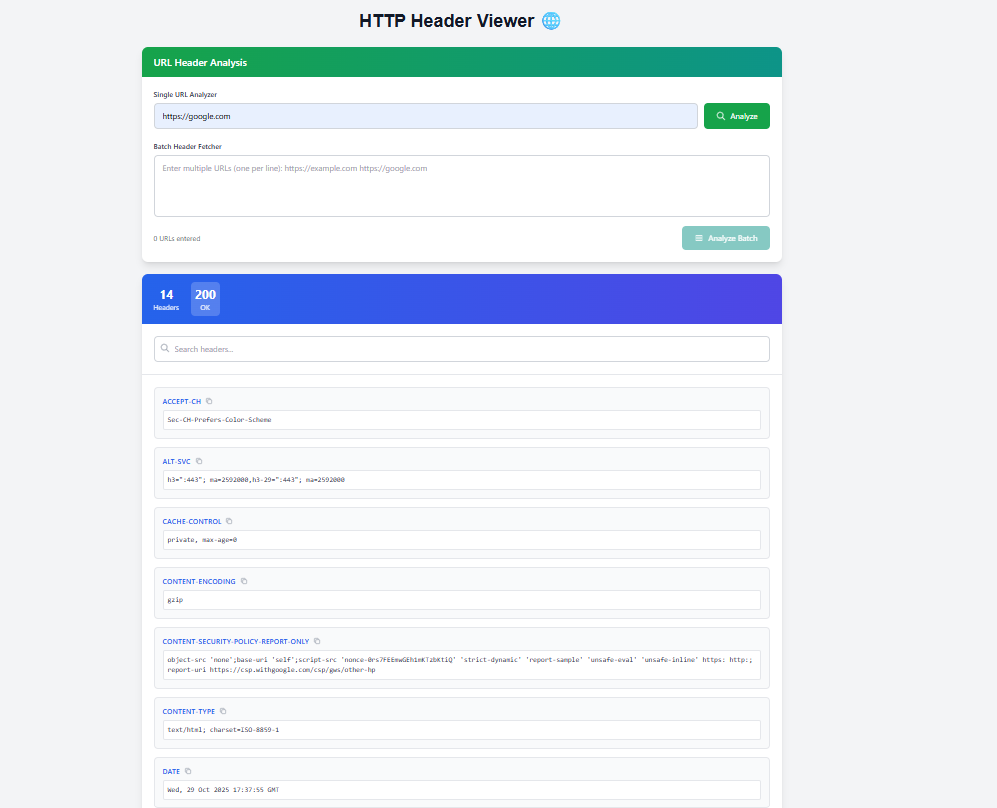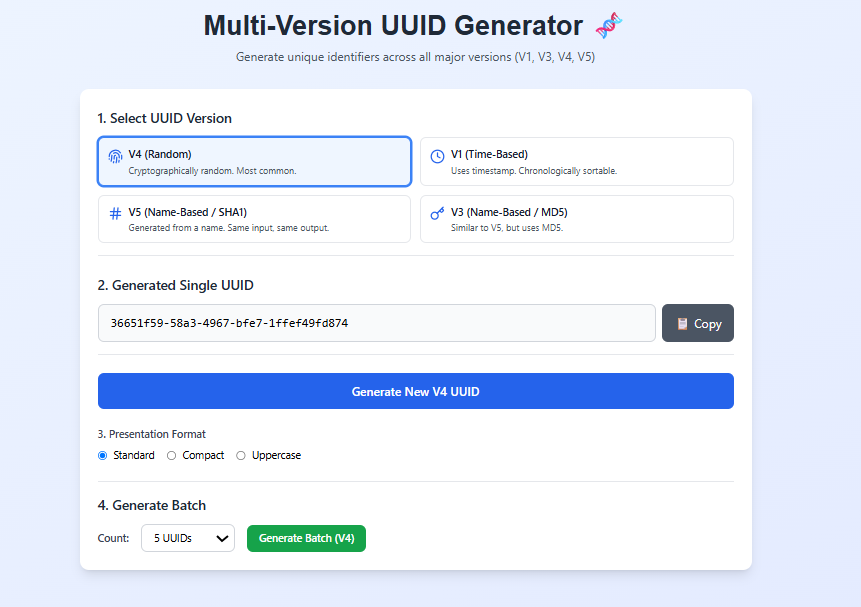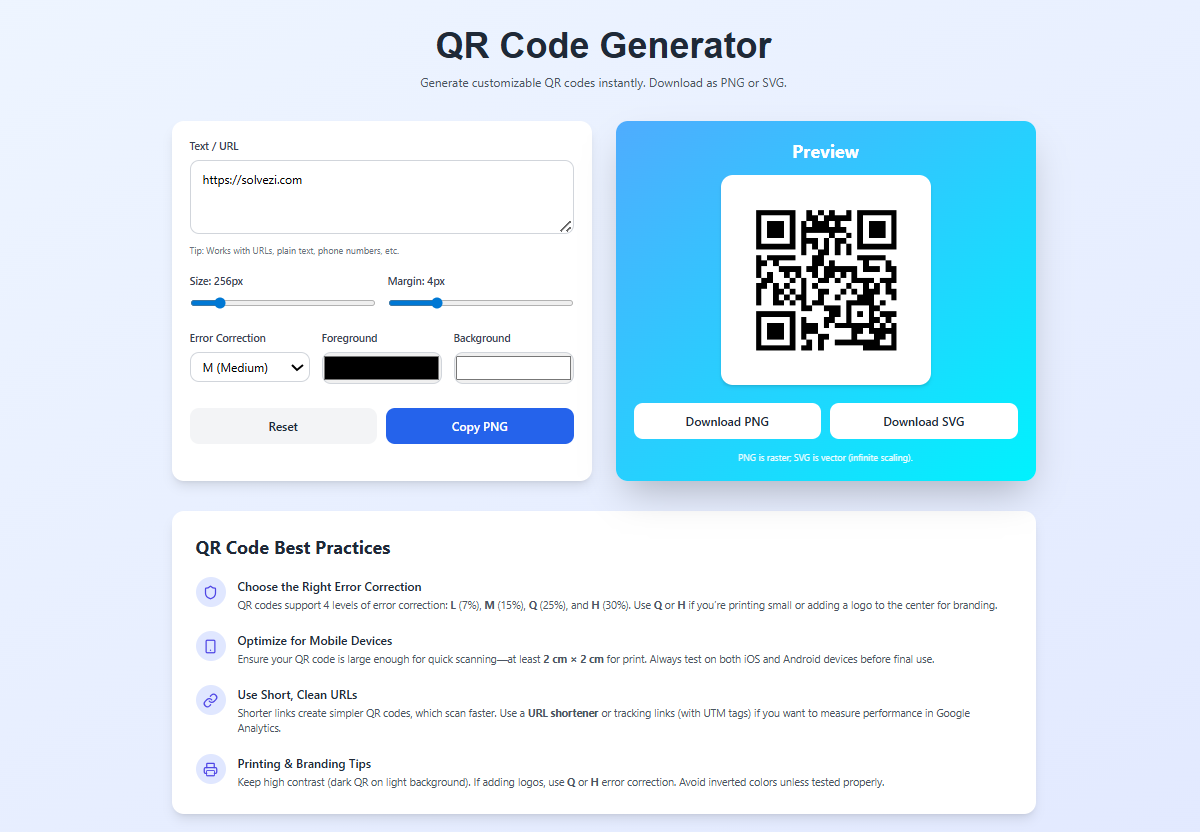🔍 DNS Lookup – Complete Guide to Query & Analyze Domain Records
🏁 1. Introduction: What is DNS Lookup?
DNS Lookup is the process of converting a domain name (like google.com) into its corresponding IP address. Since computers communicate using IP addresses rather than names, DNS lookup is essential for accessing websites and online services.
Example: Typing www.google.com in a browser → DNS returns 142.250.190.78.
--
🌐 2. Understanding DNS (Domain Name System)
DNS is often called the “phonebook of the internet.” It maps human-readable domain names to machine-readable IP addresses.
Key roles of DNS:
- Ensures users reach the correct website.
- Supports email delivery through MX records.
- Connects various services like CDN, cloud, and APIs.
(Optional diagram: Domain → DNS → IP)
--
⚙️ 3. How DNS Lookup Works (Step-by-Step)
A DNS lookup involves multiple steps from the client to authoritative servers:
- User enters a domain in a browser.
- Browser checks the local DNS cache.
- Request is sent to a recursive resolver.
- Recursive resolver queries a root name server.
- Root server refers to the TLD name server (.com, .org, etc.).
- TLD server points to the authoritative name server.
- Authoritative server returns the IP address.
- Browser caches the result and loads the website.
Tip: Include a flowchart to visualize the process.
--
🧱 4. Types of DNS Lookups
- Forward DNS Lookup: Converts a domain name to an IP address (most common).
- Reverse DNS Lookup: Finds the domain associated with a given IP address.
--
📂 5. Types of DNS Queries
- Recursive Query: Resolver returns the final IP address to the client.
- Iterative Query: Resolver provides referrals to other DNS servers.
- Non-Recursive Query: Uses cached data for immediate responses.
--
🧩 6. DNS Record Types Explained
| Record Type | Purpose |
|---|---|
| A | Maps domain to IPv4 address |
| AAAA | Maps domain to IPv6 address |
| CNAME | Alias for another domain |
| MX | Mail server information |
| NS | Authoritative name server details |
| TXT | Text info (SPF, DKIM, verification) |
| SOA | Zone administrative info |
| PTR | Reverse DNS mapping |
Include screenshots or sample outputs using Solvezi DNS Lookup Tool or MXToolbox.
--
⚡ 7. DNS Caching and TTL (Time To Live)
Caching improves DNS resolution speed by storing records locally.
Where caching happens: Browser cache, OS resolver, ISP cache, recursive resolver.
TTL: Specifies how long a record should be cached before querying again. Proper TTL reduces lookup times and server load.
--
🔐 8. DNS Security Challenges
- DNS Spoofing / Cache Poisoning: Attackers inject false records.
- DNS Hijacking: Redirects traffic to malicious servers.
- DNSSEC: Adds cryptographic validation to prevent tampering.
--
💡 9. Real-Time Example
Use the nslookup command:
nslookup www.example.com
Output explanation:
- Server info: Resolver used
- Address: IP of the resolver
- Non-authoritative answer: Actual IP of the domain
--
🚀 10. Use Cases of DNS Lookup
- Network troubleshooting: Check connectivity issues.
- Email configuration: Validate MX and SPF records.
- Website migration: Verify DNS propagation.
- Performance monitoring: Track TTL and latency.
--
🔍 11. SEO Angle (Optional)
- DNS resolution affects website load times.
- Use faster resolvers (Cloudflare, Google DNS) to improve user experience.
- Optimize TTLs and record configuration for performance and SEO.
--
🧠 12. Common DNS Lookup Issues
| Issue | Description | Solution |
|---|---|---|
| DNS_PROBE_FINISHED_NXDOMAIN | Domain not found | Check NS records and configuration |
| Slow DNS resolution | High latency | Use faster DNS resolvers or reduce TTL |
| Misconfigured records | Wrong A/MX/CNAME entries | Validate with DNS lookup tool |
--
🧾 13. Summary / Conclusion
DNS Lookup translates domain names to IP addresses, enabling smooth communication over the internet. Understanding record types, queries, caching, and security is crucial for IT professionals, website owners, and students.
Use Solvezi DNS Lookup Tool to perform live queries, troubleshoot issues, and analyze domain health.
--
💬 FAQ Section
Q1: What is DNS lookup used for?
- DNS lookup translates a domain name into its IP address, allowing browsers to find and connect to websites.
Q2: What's the difference between forward and reverse DNS lookup?
- Forward lookup converts a domain to an IP, while reverse lookup finds the domain associated with an IP.
Q3: How to check DNS records?
- Use tools like the Solvezi DNS Lookup Tool,
nslookup, ordigcommands.
Q4: How long does DNS caching last?
- DNS caching duration depends on the TTL (Time To Live) set in DNS records, typically from seconds to hours.
--
Tags: dns lookup, dns query tool, domain records, mx record lookup, soa record, dns analytics, dns troubleshooting, online dns checker





